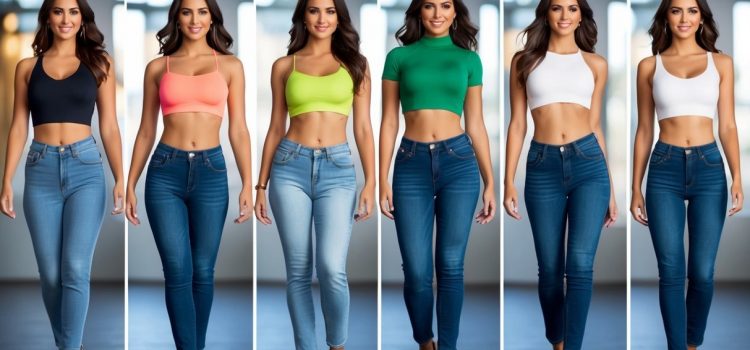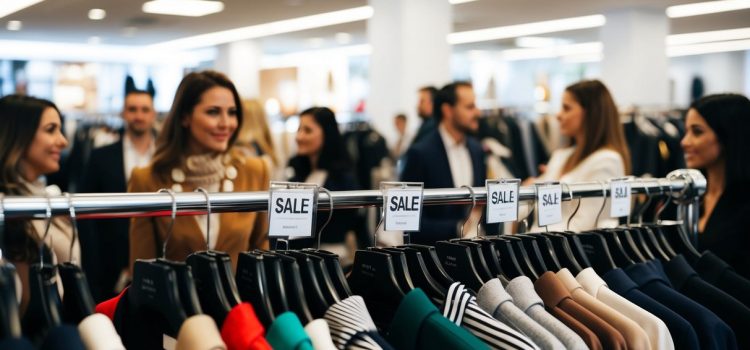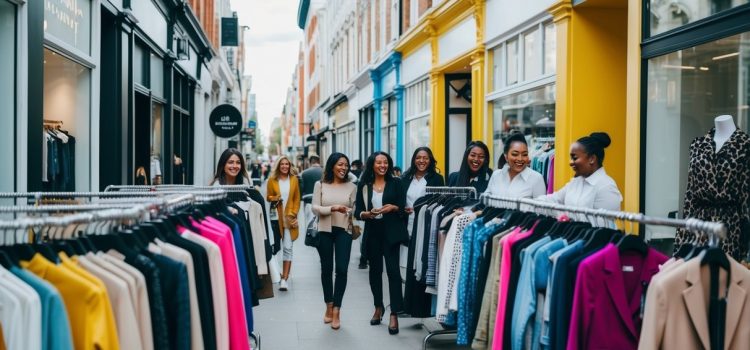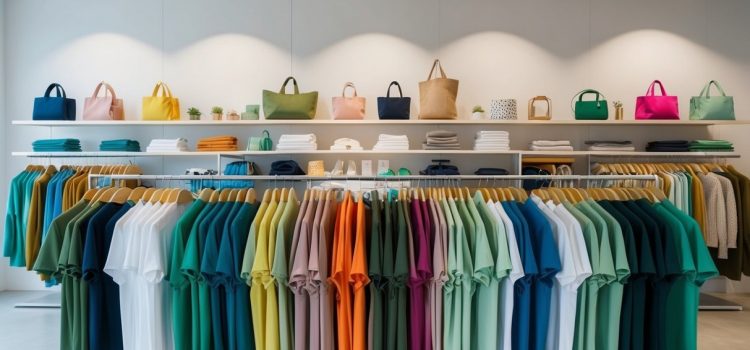
Choosing the right jeans can be a game changer for anyone looking to enhance their style and comfort. The best jeans for different body types will highlight individual shapes and proportions, ensuring a flattering fit. Knowing the right cuts and styles can make the shopping experience much easier and more enjoyable.

For those with curvy figures, high-waisted and bootcut styles often provide the best balance, while athletic body types may find straight-leg or relaxed fits more accommodating. Different silhouettes, like skinny or wide-leg options, are tailored to accentuate specific features, helping one to feel confident in their clothing choices.
Understanding the diverse range of jean styles is essential for building a versatile wardrobe. With the right information, anyone can discover the perfect pair that complements their unique body type and personal style.
Understanding Body Types
Body types play a crucial role in selecting jeans that fit well and enhance appearance. By identifying body shape and understanding proportions, individuals can find the best jeans suited for their unique figures.
Identifying Your Body Shape
Body shapes generally fall into categories such as hourglass, pear, apple, rectangle, and inverted triangle. Each shape has distinct features that affect how jeans fit and flatter the body.
- Hourglass: Defined waist with balanced bust and hips.
- Pear: Wider hips with narrower shoulders.
- Apple: Fuller bust and waist, with slimmer hips.
- Rectangle: Similar width at shoulders, waist, and hips.
- Inverted Triangle: Broader shoulders with narrower hips.
Recognizing her body shape helps in choosing cuts and styles. For instance, high-waisted jeans suit hourglass and pear shapes, while straight-leg jeans may benefit rectangle body types.
The Role of Body Proportions
Body proportions relate to the measurement ratios between different areas of the body. This understanding is vital for finding well-fitting jeans.
- Torso Length: Short torsos may benefit from high-rise jeans to create balance.
- Leg Length: Long legs might look great in ankle-length styles, while shorter legs can opt for cropped cuts.
Knowing whether one has longer or shorter legs affects the decision on the rise and length of jeans. A balanced silhouette can be achieved by matching jeans to these proportions, ensuring comfort and style.
Denim Recommendations by Body Type
Choosing the right jeans for specific body types enhances comfort and style. Different silhouettes and details can accentuate the body’s natural shape, providing both a flattering fit and confidence.
Best Jeans for Pear-Shaped Bodies
Pear-shaped bodies typically have wider hips and narrower shoulders. High-waisted jeans are an excellent choice, as they accentuate the waist while elongating the legs.
Bootcut jeans also work well, balancing the proportions between the hips and the shoulders. Look for styles with detailed pockets or patterns on the upper areas to draw attention upwards.
Recommended fits:
- High-rise bootcut
- Straight-leg
- Wide-leg
These options create balance and enhance the silhouette.
Optimal Choices for Apple-Shaped Figures
For those with apple-shaped figures, where the waist is broader than the hips, select jeans that define the waist and elongate the legs. Mid-rise jeans are ideal for providing comfort and support to the midsection.
Bootcut styles help to create a more balanced appearance.
Details to focus on:
- Flap pockets to add dimension
- Dark washes that create a slimming effect
Recommended fits:
- Curvy straight
- Relaxed fit
- High-rise
These picks draw attention away from the waist while highlighting the legs.
Styles for Hourglass Figures
Hourglass figures are characterized by a well-defined waist with balanced bust and hip measurements. Skinny jeans can accentuate curves effectively.
High-waisted jeans are particularly flattering, as they highlight the waist while providing support. Look for styles with stretch denim to ensure comfort.
Recommended fits:
- High-rise skinny
- Fitted bootcut
- Wide-leg
Choosing jeans that define the waist while hugging the hips and thighs can enhance this shape beautifully.
Jeans for Athletic Structures
Individuals with athletic bodies often have a straight silhouette. To create a more defined shape, opt for curvy or slim-fit jeans that add some flair to the legs.
Distressed styles can also bring personality to the look.
Focusing on rises and leg shapes can enhance the overall appearance.
Recommended styles:
- Slim straight
- Bootcut
- Cropped jeans
These options lend a stylish moment, adding versatility to an athletic frame.
Flattering Fits for Petite Frames
Petite individuals often face challenges finding jeans that fit well. Choosing ankle-length or cropped jeans provides an elongating effect.
High-waisted options work well to define the waist without overwhelming the frame.
Tips for petite jeans:
- Look for tailored styles
- Dark colors for a slimming effect
- Minimal detailing to avoid overwhelming the silhouette
Recommended fits:
- Skinny jeans
- Straight-leg
- High-rise
These selections ensure a streamlined look that flatters and fits perfectly.
Fit and Sizing Tips

Choosing the right fit and size is crucial for finding jeans that enhance body shape and provide comfort. Understanding the nuances of jean materials and sizing can lead to better choices.
The Importance of Stretch
Stretch in jeans is vital for achieving a comfortable fit. Fabrics with elastane or spandex offer mobility while maintaining shape. This flexibility is especially important for various body types, allowing for a snug fit without restriction.
Key Benefits of Stretch Jeans:
- Comfort: Provides ease of movement.
- Adaptability: Adjusts to body shape, enhancing silhouette.
- Durability: Maintains structure after multiple wears.
For optimal results, look for a blend of cotton and stretch materials. This combination ensures breathability without sacrificing fit. A well-stretched denim can provide a tailored look while accommodating curves.
Navigating Jean Sizes
Jean sizes can be inconsistent across brands, making it essential to understand sizing charts. It’s beneficial to measure waist, hips, and inseam before selecting a size. Common measurements include:
- Waist: Measure around the natural waistline.
- Hips: Measure at the widest part.
- Inseam: Measure from the crotch to the ankle.
Additionally, trying on different styles can help determine the best size. For example, a skinny fit might require a smaller size than a relaxed fit. It’s also advisable to consider the rise of the jeans, such as low, mid, or high-rise, as this affects how they fit around the waist and hips. Always check return policies, as trying multiple sizes may be necessary to find the perfect fit.
Care and Maintenance
Proper care and maintenance can significantly enhance the durability and appearance of jeans. Understanding the right washing, drying, and general care practices is essential.
Washing and Drying Guidelines
To maintain color and prevent shrinkage, it’s important to follow specific washing guidelines. Always wash jeans in cold water to help preserve their color and fit. Turning them inside out can further protect the outer fabric from fading.
Using a mild detergent is recommended, as harsh chemicals can damage the fibers. It’s best to avoid bleach or fabric softeners, which may alter the texture.
When it comes to drying, air drying is preferable. This method reduces the risk of shrinkage and keeps the fabric intact. If using a dryer, select a low heat setting and remove the jeans while slightly damp to minimize damage.
Extending the Life of Your Jeans
To extend the lifespan of jeans, regular care practices are vital. Avoid washing them after every wear unless they are visibly soiled. Spot cleaning stains can also reduce the frequency of full washes.
Storing jeans correctly is essential. Fold them neatly rather than hanging, which can stretch the fabric over time.
Occasionally consider using a denim-friendly conditioner or spray to maintain softness. Repair minor damages promptly to prevent further wear. These practices can help keep jeans looking new for a longer period.





























Comments
Hello world!
Pic of the week: Sunset at margate beach
The first day’s journey was through the pink fields
The first day’s journey was through the pink fields
The first day’s journey was through the pink fields